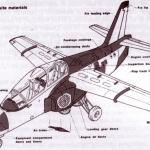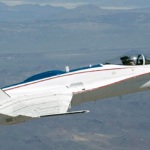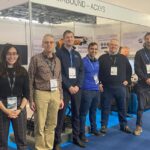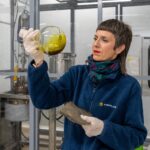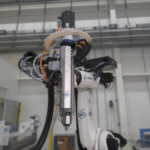Testing required to develop and certify aircraft structures has increased dramatically with the growth in use of carbon-fiber composites, and the cost and time required has become an issue as industry looks for further improvements to reduce fuel burn.
Now NASA has formed an industry-spanning consortium with the goal of cutting by 30% today’s 10-year timeline for developing and certifying composite aircraft structures. The public-private partnership of NASA, the FAA, Boeing, GE Aviation, Lockheed Martin and a United Technologies Corp. team led by Pratt & Whitney plans to conduct joint research under the five-year Advanced Composites Program (ACP).With growth in use of composites to around 50% of structure weight in the Boeing 787, the number of material property tests during development has increased to 100,000 from 5,000 in the 1980s and structural element tests to 10,000 from 500, says Eric Cregger, senior technical fellow in structural technologies at Boeing Research & Technology.
Developing methods to predict defects in carbon-fiber laminates is a key object of NASA’s Advanced Composites Program.
“The increase in cost and time to develop and certify is becoming an issue,” Cregger told a manufacturing technology conference in Chicago in September. “The time to develop a next-generation aircraft is more than 210 months and going up.”
“The lack of accepted analysis and test protocols that can be used to provide consistent understanding of the damage tolerance, production process variability and long-term durability of composites” is a significant problem, says NASA. “To assure product safety, developers must rely on time-consuming and costly testing procedures resulting in high development cost and long certification times.”
ACP will focus on three technology challenges to developing and certifying composite structures: predicting damage, rapid inspection, and manufacturing processes and simulation. The program was funded in NASA’s fiscal 2013 budget but has taken time to begin because of the complexity in agreeing how the companies will collaborate and share data from their proprietary experiences, to develop industry standards to characterize the as-manufactured behavior of composite structures.
The key final step was to appoint an integrator to manage the program and distribute NASA funding to the partners, which will share in the cost of research projects. The National Institute of Aerospace (NIA) in Hampton, Virginia, close to consortium-member NASA Langley Research Center, has been selected. “NIA is developing sub-agreements with the individual companies. They are just about there,” says NASA Langley’s Stan Smeltzer, ACP deputy program manager.
Faster development and certification could speed new designs such as NASA and Boeing’s Prseus stitched-composite structure.
A draft set of up to 20 research activities to be conducted in Phase 1 of ACP has been taking shape over the past six months, and the first projects should begin by mid-year. The goal is to have multiple partners involved in each research project, where possible. “The more partners are working together, the more value there is, so we favor projects with multiple partners,” Smeltzer says.
Because of the delay in establishing the public-partnership agreements, Phase 1 will now end in fiscal 2016. There then will be a downselect for those projects that continue into Phase 2, which is planned to end in fiscal 2018.
The predictive capabilities technical challenge is intended to develop composite damage-prediction methods sufficiently reliable to enable a reduction in the element and subcomponent testing necessary for development and certification. ACP also is expected to create rapid design tools to speed preliminary design and reduce redesign.
The rapid inspection challenge is intended to take the majority of composite defect types seen in aircraft manufacturing and develop methods to find, quantify and pass defect data back for analysis within the digital design environment. ACP also will identify automated inspection and analysis methods and develop a baseline of standard practice for ranking candidate techniques.
The manufacturing process and simulation challenge is aimed at developing predictive tools to speed design, analysis and fabrication; predict defects induced by automated fiber placement; and improve the ability to process fiber-placed structures. ACP also has the goal of enhancing the ability to adhesively bond composites for more-efficient structures, says Smeltzer.
ACP is unusual for NASA, which does not conduct much research on manufacturing technology. Smeltzer says its role within the consortium will be to understand the physics of composites and then bring that understanding to bear on existing manufacturing processes to drive out defects such as delaminations and voids that today create the need for such extensive testing.



